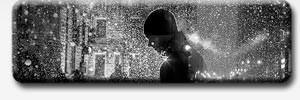 |
Somewhere between being lazy, and not trusting new toys, I never really tried Smart Objects, or Smart Filters. On the surface, something always felt "wrong" about using them. I could never quite put my finger on it before. Now I know the problem.
What are Smart Objects?
The general point of a Smart Object is to select one or more layers, and combine them into a single, non-destructable and editable layer. In theory, you could take this group of layers (now acting as one), and scale, stretch, or distort them. The benefit of this, is that you can keep scaling them, and only upon flattening the image, would it apply the final math.
What are Smart Filters?
Similarly, many Filters could be applied to a Smart Object, and create a Smart Filter. These Smart Filters would attach themselves to a Smart Object, and allow you to make edits to the filter’s settings, even after you applied them. For Example; a Gaussian Blur of 1, could later be changed to 5. This is because it would not actually do anything to the layer, until the file is flattened and saved.
My Resitance
Personally, I always duplicated the background layer, and applied sharpening or noise, or whatever. If I needed to make multiple duplicate layers to achieve my goal, then so be it. What’s an extra layer or two among friends? This worked for the past 20 years, and I saw little reason to change it now.
So, as I said, I started teaching an Intermediate Course, and thought I should finally start teaching that Smart Objects and Smart Filters were good. I thought if I explained that a single layer could have sharpening, and de-noise attached to it, that would result in a cleaner workflow. Less damage to original pixels, and all that.
Well, that lasted only about 2-3 weeks.
There were two main problems with this workflow.
- The first one I knew about, which is that Photoshop runs slower. So I warned that if you were working on an older machine, or laptop or something, you may not want to do it this way. I was thinking a newer 8-Core Intel processor would not have a problem with them. Not true. There was definate lag time.
The second drawback was a deal killer.
- It seems that if you create a Smart Object, and attach a few Smart Filters to the layer, it appears to run fine, until you want to do something extra to the document, that affects the layer. For example, a simple crop. Photoshop wants to re-apply the math every time you touch that Smart Object.
Where All This Started
Picture this: I was working on the start of a 30 image job. I was going to use this new workflow on them. I did full work on 3 of them my first day of the project. The next day I received the cropping information, so I went back to crop. Thankfully, I was only 3 in, because it reloads the filter to re-apply the data to the new crop information. Unfortunately, the PlugIn Filter I used did not like being a Smart Filter (even though it applied fine), and would not reapply the settings when I tried to crop.This is a brand named 3rd party filter that I use every day, on every image. Omitting it is not an option.
It wanted to reload the plugin interface, then it locked up the plugin, and locked me out of the actual layer and all the settings. So here I was, with no idea what the specific settings were in the various Filters I used, because I could not access them because of a single rogue program. Not using the Filter was not an option. It was the whole point of the workflow, to streamline random layers and make life easier. I could not touch the layer, without it wanting to check with each filter, and get it’s approval before letting me do anything.
I’ll spare you the details, and just leave it the fact that I needed to rebuild all 3 images from scratch, because I could not access the data I needed to avoid the extra work. I was really bumming. And for what it’s worth, even on my 8-Core processor, it ran slower in general. Once I went back to my normal "one layer, one filter" that worked for the past 20 years, I had no further problems, and finished the job without a hitch.
Be careful when using Smart Objects.
I have a new Photoshop Basic Course starting soon. You can get a really great price, for a Live Professionally Instructed Course. With a microphone or webcam, you can ask questions and hear the other students, just like a normal classroom.
If you are interested, follow the link below to find out more, and sign up.
Adobe Photoshop Basic I Course
Adobe Photoshop Basic II Course


